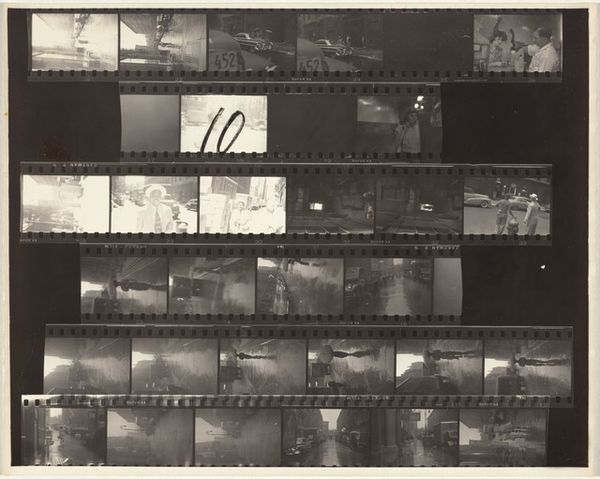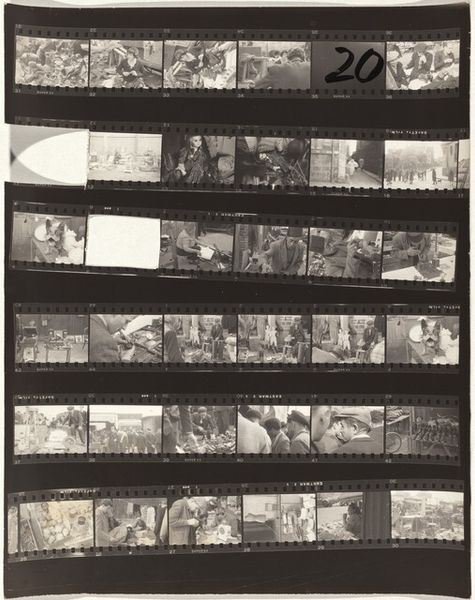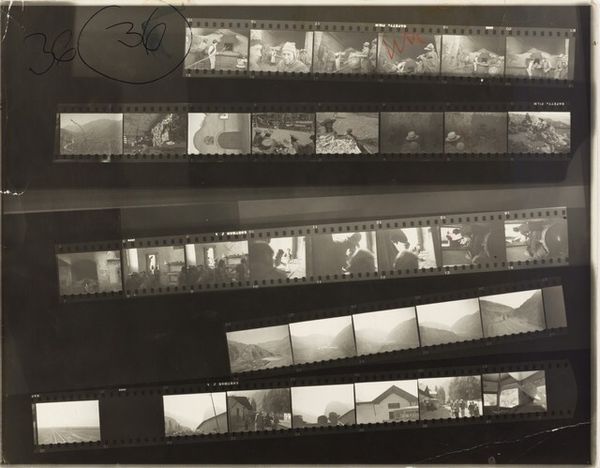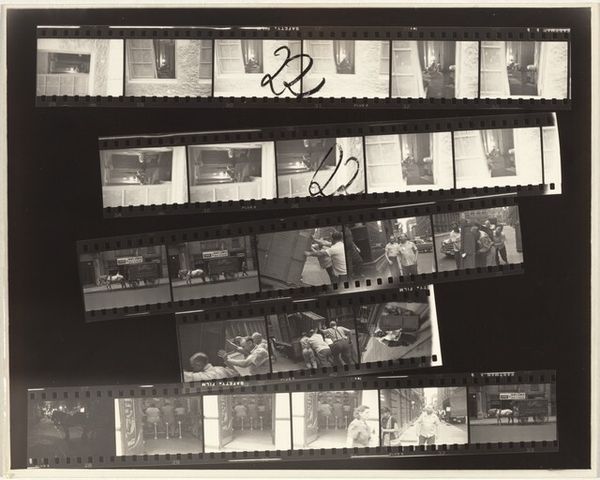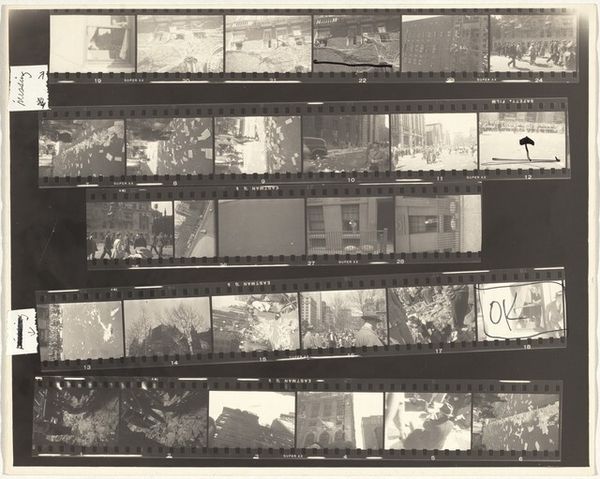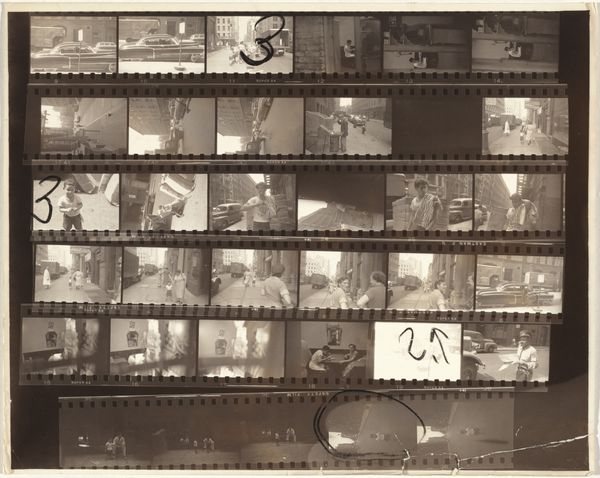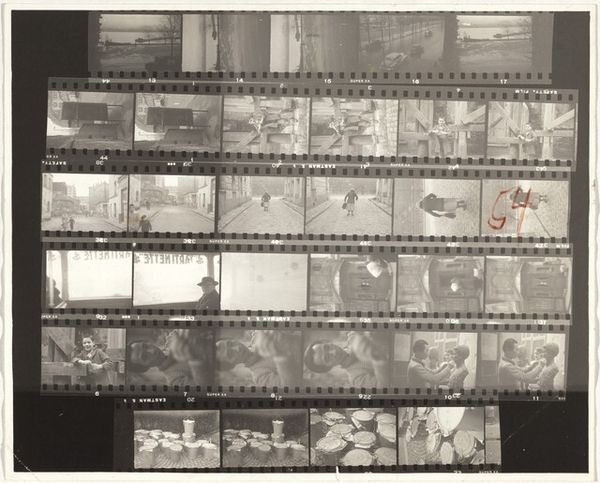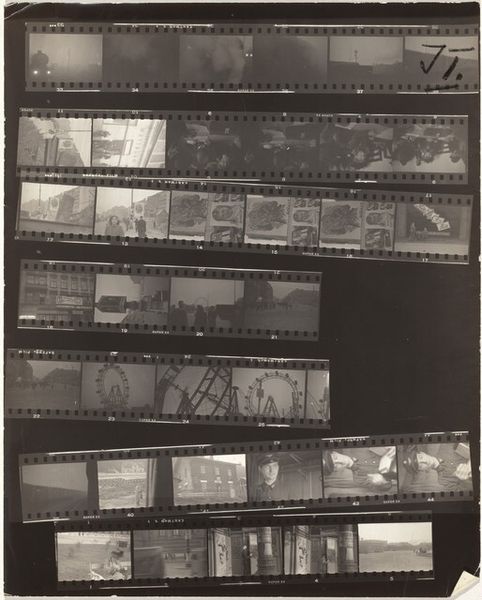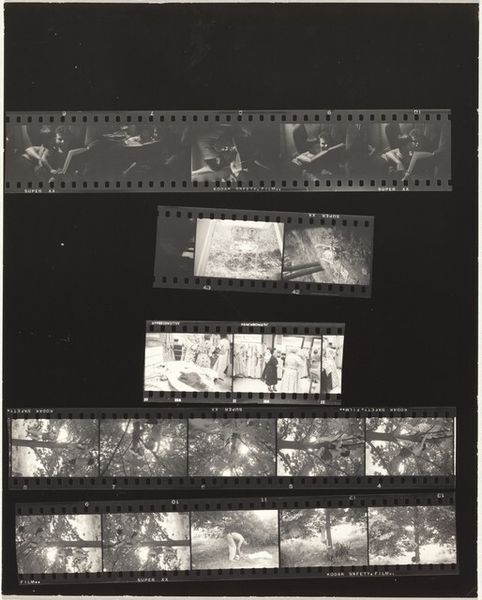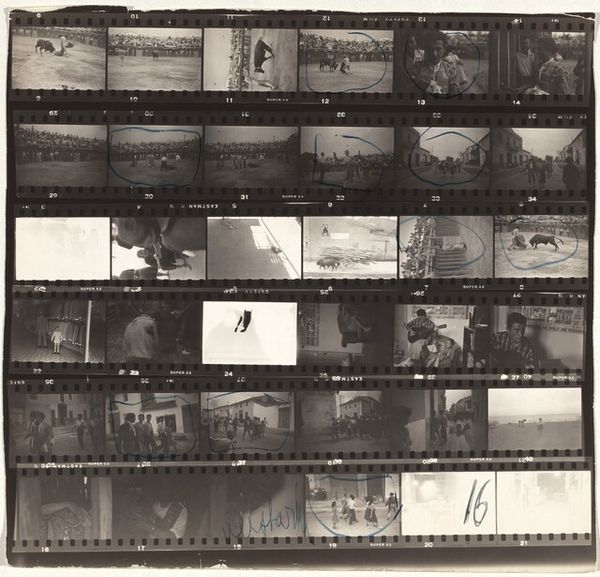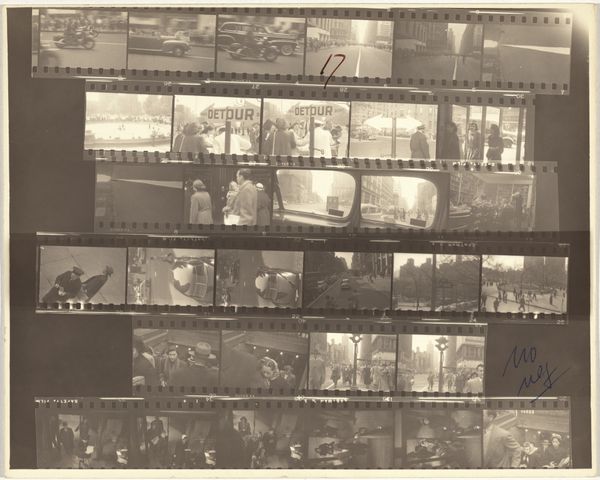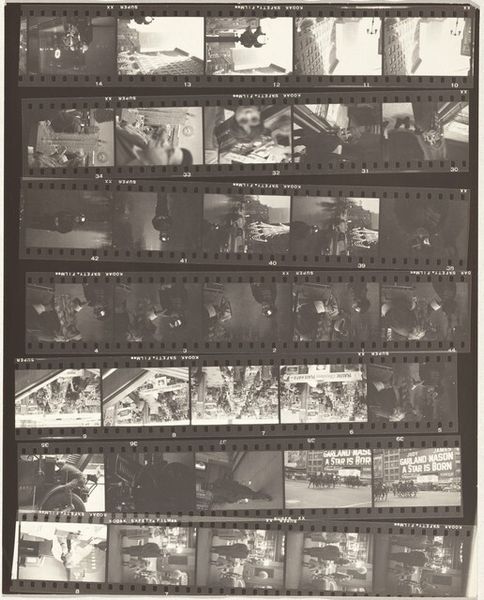
print, photography, gelatin-silver-print
# print
#
landscape
#
street-photography
#
photography
#
gelatin-silver-print
#
cityscape
#
modernism
#
realism
Dimensions: overall: 25.2 x 20.2 cm (9 15/16 x 7 15/16 in.)
Copyright: National Gallery of Art: CC0 1.0
Curator: This is Robert Frank's gelatin silver print, "11th Street Story 18," created in 1951. Editor: At first glance, it seems to present more of an indexical artifact of photography than a complete work, with all of the edges and film strips present. Curator: That’s an interesting entry point. Looking at this contact sheet gives us a unique window into Frank's process during a key period in American photography, shifting from pictorialism towards a raw, more spontaneous form of realism. It provides clues as to what images he valued and why. Editor: Right. You see all the traces of his working process, which offers a tangible understanding of how photographs, particularly street photographs, were made and presented back then. These aren't pristine, digitally-crafted images. This piece gives a tactile sense of labor. Curator: And what's striking to me is the composition of each individual frame. There’s a conscious decision to capture everyday scenes: storefronts, crowds, street views. Each photo captures fleeting moments of mid-century New York. Editor: Absolutely, I think there’s almost a mundane quality to it, like observing someone else’s snapshots. Even the film strips are visible, including all the codes and manufacturer's info. It almost resists artistic elevation. But the presentation here elevates the document to art. Curator: The presence of that number 18 too, scratched into the print…that almost invites speculation about what this means in the wider narrative. Perhaps it hints at editing decisions. Editor: Indeed, how and why selections were made is a social commentary in itself. It is like a documentary artifact of a documentary practice. Curator: Considering Frank's later work and his impact on photographic language, it’s exciting to view this early experimentation. It allows viewers to question what they're actually seeing when faced with images. Editor: Right. Thinking about photography as a material practice brings those power dynamics between the photographer, the subject, and the eventual viewer into much sharper focus, making this quite impactful and conceptually loaded despite the initial unassuming aesthetic.
Comments
No comments
Be the first to comment and join the conversation on the ultimate creative platform.
